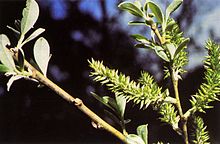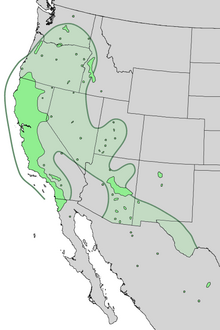
Pinus ponderosa, commonly known as the ponderosa pine, bull pine, blackjack pine, western yellow-pine, or filipinus pine is a very large pine tree species of variable habitat native to mountainous regions of western North America. It is the most widely distributed pine species in North America.

Fremontodendron californicum, with the common names California flannelbush, California fremontia, and flannel bush, is a flowering shrub native to diverse habitats in southwestern North America.

Frangula californica is a species of flowering plant in the buckthorn family native to western North America. It produces edible fruits and seeds. It is commonly known as California coffeeberry and California buckthorn.

Salix nigra, the black willow, is a species of willow native to eastern North America, from New Brunswick and southern Ontario west to Minnesota, and south to northern Florida and Texas.

Salix lucida, the shining willow, Pacific willow, red willow, or whiplash willow, is a species of willow native to northern and western North America, occurring in wetland habitats. It is the largest willow found in British Columbia.

Salix scouleriana is a species of willow native to northwestern North America. Other names occasionally used include fire willow, Nuttall willow, mountain willow, and black willow.

Lupinus bicolor is a species of lupine known as the miniature lupine, Lindley's annual lupine, pigmy-leaved lupine, or bicolor lupine.

Rubus ursinus is a North American species of blackberry or dewberry, known by the common names California blackberry, California dewberry, Douglas berry, Pacific blackberry, Pacific dewberry and trailing blackberry.
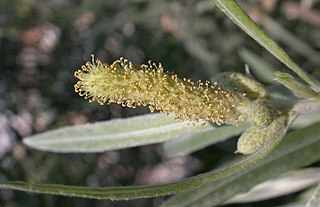
Salix exigua is a species of willow native to most of North America except for the southeast and far north, occurring from Alaska east to New Brunswick, and south to northern Mexico. It is considered a threatened species in Massachusetts while in Connecticut, Maryland, and New Hampshire it is considered endangered.
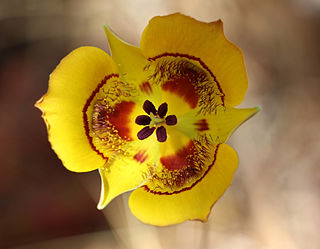
Calochortus clavatus is a species of mariposa lily known by the common name clubhair mariposa lily. It is endemic to California where it is found in forests and on chaparral slopes.

Eryngium aristulatum, known by the common names California eryngo and Jepson's button celery, is a species of flowering plant in the family Apiaceae.

Mentzelia multiflora, commonly known as Adonis blazingstar, Adonis stickleaf, desert blazingstar, prairie stickleaf and manyflowered mentzelia is a herbaceous perennial wildflower of the family Loasaceae.

Populus fremontii, commonly known as Frémont's cottonwood, is a cottonwood native to riparian zones of the Southwestern United States and northern through central Mexico. It is one of three species in Populus sect. Aigeiros. The tree was named after 19th century American explorer and pathfinder John C. Frémont.

Artemisia cana is a species of sagebrush native to western and central North America, a member of the sunflower family. It is known by many common names, including silver sagebrush, sticky sagebrush, silver wormwood, hoary sagebrush, and dwarf sagebrush.
Trifolium barbigerum is a species of clover known by the common name bearded clover.
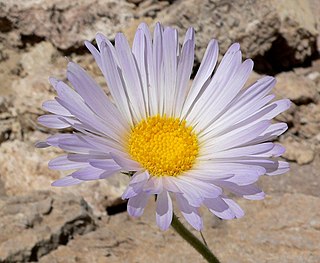
Xylorhiza tortifolia is a species of flowering plant in the family Asteraceae, known by the common names Mojave-aster and Mojave woodyaster.

Holodiscus dumosus is a species of flowering plant in the rose family, with the common names mountain spray, rock-spiraea, bush oceanspray, and glandular oceanspray.

Salix brachycarpa is a species of flowering plant in the willow family known by the common names barren-ground willow, small-fruit willow and shortfruit willow.

Berberis dictyota, now reclassified as Berberis aquifolium var. dictyota, with the common names Jepson's oregon grape and shining netvein barberry, is a flowering plant in the Barberry family.
